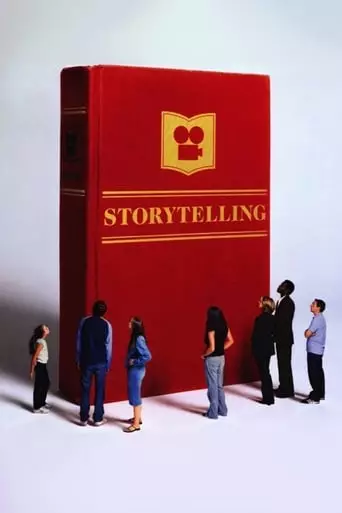A dachshund passes from oddball owner to oddball owner, whose radically dysfunctional lives are all impacted by the pooch. Wiener-Dog is a dark comedy directed by Todd Solondz, known for […]

A dachshund passes from oddball owner to oddball owner, whose radically dysfunctional lives are all impacted by the pooch. Wiener-Dog is a dark comedy directed by Todd Solondz, known for […]

An unattractive 7th grader struggles to cope with suburban life as the middle child with inattentive parents and bullies at school. Welcome to the Dollhouse is a darkly comedic drama […]

College and high school serve as the backdrop for two stories about dysfunction and personal turmoil. Storytelling is a 2001 film directed by Todd Solondz, renowned for his satirical and […]

The lives of many individuals connected by the desire for happiness, often from sources usually considered dark or evil. Happiness, directed by Todd Solondz in 1998, is a dark comedy […]

Friends, family, and lovers struggle to find love, forgiveness, and meaning in an almost war-torn world riddled with comedy and pathos. Follows Solondz’s film Happiness (1998). Life During Wartime is […]
Todd Solondz: The Dark Satirist of American Independent Cinema
Todd Solondz is an American filmmaker and screenwriter renowned for his provocative, darkly comedic explorations of suburban life, social taboos, and human frailty. With films like Welcome to the Dollhouse (1995), Happiness (1998), and Storytelling (2001), Solondz has carved a unique niche in the world of independent cinema. His work often blends biting satire with poignant insights, challenging audiences to confront uncomfortable truths about society and themselves.
Early Life and Education
Born on October 15, 1959, in Newark, New Jersey, Todd Solondz grew up in a middle-class Jewish family. His suburban upbringing would later become a central theme in much of his work.
Solondz studied English at Yale University before attending New York University’s Tisch School of the Arts, where he pursued filmmaking. Early in his career, he worked as an English as a Second Language (ESL) teacher while developing his unique voice as a writer and director.
Breakthrough: Welcome to the Dollhouse
Solondz achieved critical acclaim with his second feature film, Welcome to the Dollhouse (1995).
Plot: The film follows Dawn Wiener, an awkward middle schooler navigating the cruelty of adolescence in suburban New Jersey.
Themes: Welcome to the Dollhouse delves into themes of bullying, alienation, and the painful realities of growing up.
Awards: The film won the Grand Jury Prize at the Sundance Film Festival, establishing Solondz as a bold new voice in independent cinema.
Happiness: A Controversial Masterpiece
In 1998, Solondz released Happiness, a darkly comedic ensemble film that examines the lives of interconnected characters grappling with loneliness, desire, and moral ambiguity.
Critical Reception: While the film received widespread acclaim for its daring storytelling and sharp social commentary, it also sparked controversy for its unflinching portrayal of taboo subjects.
Themes: Solondz explores the fragility of human connection, the complexity of morality, and the often-hidden darkness within seemingly ordinary lives.
Awards: Happiness earned the International Critics’ Prize at the Cannes Film Festival.
Continued Exploration of Suburbia and Human Complexity
Solondz’s subsequent films further solidified his reputation as a fearless and innovative filmmaker.
Storytelling (2001)
A two-part film that examines the ethics of storytelling and the power dynamics in relationships, Storytelling pushes the boundaries of narrative form and content.
Palindromes (2004)
This experimental film follows the journey of a 13-year-old girl, Aviva, as she grapples with issues of identity and morality. The role of Aviva is played by multiple actors of different ages, genders, and ethnicities, reflecting Solondz’s fascination with perspective and subjectivity.
Life During Wartime (2009)
A semi-sequel to Happiness, this film revisits the characters from the earlier work, now portrayed by a new cast. It examines themes of forgiveness, trauma, and the lingering effects of past actions.
Wiener-Dog (2016)
This episodic film uses the journey of a dachshund to connect various vignettes about human suffering, absurdity, and resilience.
Hallmarks of Solondz’s Filmmaking
Todd Solondz’s films are characterized by their dark humor, satirical edge, and unflinching exploration of uncomfortable subjects.
Suburban Settings: Much of his work is set in the suburban milieu, highlighting the contradictions and hidden struggles of seemingly idyllic communities.
Complex Characters: Solondz’s characters are deeply flawed, yet he approaches them with a mix of empathy and critical distance.
Narrative Experimentation: From unconventional casting choices to fragmented storytelling, Solondz often challenges traditional narrative structures.
Moral Ambiguity: His films avoid easy answers, forcing audiences to grapple with their own judgments and biases.
Influence and Legacy
While Solondz’s work has often divided audiences, his impact on independent cinema is undeniable.
Inspiration: Solondz has inspired a generation of filmmakers to take creative risks and tackle challenging subjects.
Cultural Impact: His films serve as a mirror to society, exposing its hypocrisies and complexities with humor and insight.
Challenges and Controversies
Solondz’s willingness to tackle taboo topics has sometimes led to controversy, with critics accusing him of being overly cynical or exploitative. However, supporters argue that his work is a necessary critique of societal norms and human behavior.
Conclusion
Todd Solondz remains a singular voice in contemporary cinema, unafraid to confront the darker corners of human existence while finding humor and humanity in unexpected places. Through his distinctive style and fearless storytelling, Solondz challenges audiences to look beyond surface appearances and grapple with the complexities of life. His films, while often polarizing, continue to provoke thought, spark dialogue, and push the boundaries of what cinema can achieve.